How Natural Language Processing (NLP) Is Transforming SEO

The way we implement SEO is constantly adjusting to keep up with how the search engine algorithms work. If you want your website to rank high or keep it there, you need to understand a bit about Natural Language Processing, often referred to as NLP.
Natural Language Processing uses great amounts of data to run statistical and machine learning models to interpret content. This article will help you better understand how search engines are evolving, what NLP is, and its relevance to SEO.
What Is Natural Language Processing?
Natural language processing is an area of artificial intelligence focused on language interpretation. NLP has been used extensively in computer science since the 1960s. More recently, it’s started to underpin how search engines work.
Through NLP, AI interprets and tries to understand speech or text data. Within the context of SEO, NLP helps a search engine like Google review content and provide improved search results.
NLP and BERT Join Hands
At the end of 2019, Google announced the official release of the BERT algorithm. BERT stands for “Bidirectional Encoder Representations from Transformers”. It is Google’s neural network-based technique for NLP pre-training.
In simple words, releasing BERT was a massive step forward for the company and the largest change to its search system in recent time. The changes resulting from this update would provide improved search results, affecting roughly one in 10 searches.
An example provided by Google below shows how using BERT improved the relevancy of search queries.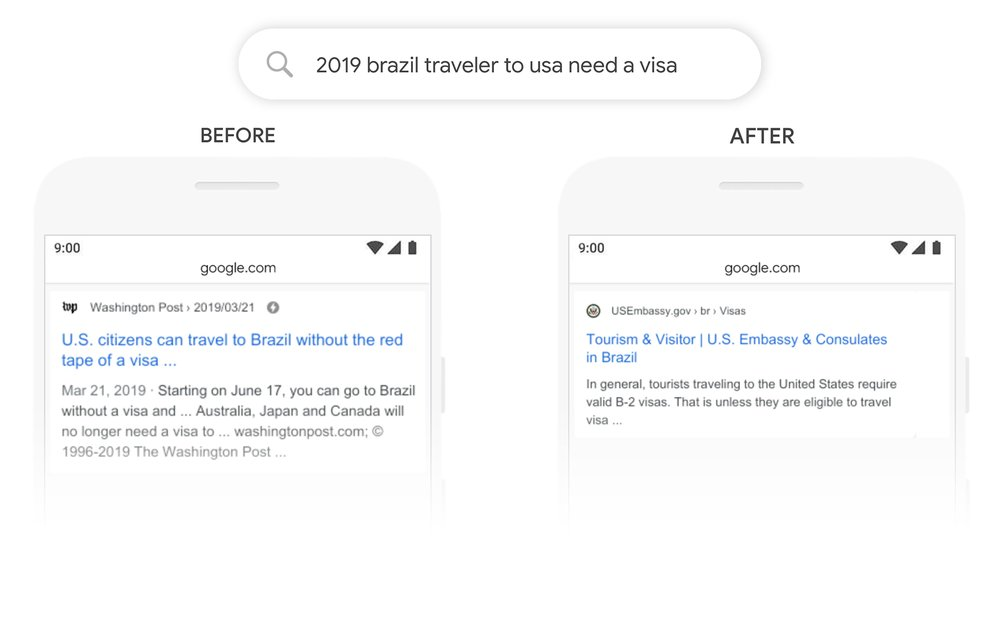
You can see the difference in the search results. The improvement results from BERT having a better understanding of words within the context of sentences.
The SMITH Update from Google
Alongside the BERT update, Google also released the SMITH update. The SMITH stands for “Siamese Multi-Depth Transformer-based Hierarchical”.
Google developed the SMITH algorithm because they wanted to understand long queries and long documents better. That means the algorithm can scan a 2,000+ word article and identify relevant points in the article that align with different search queries.
That is particularly useful for Google Instant answers, and related questions feature.
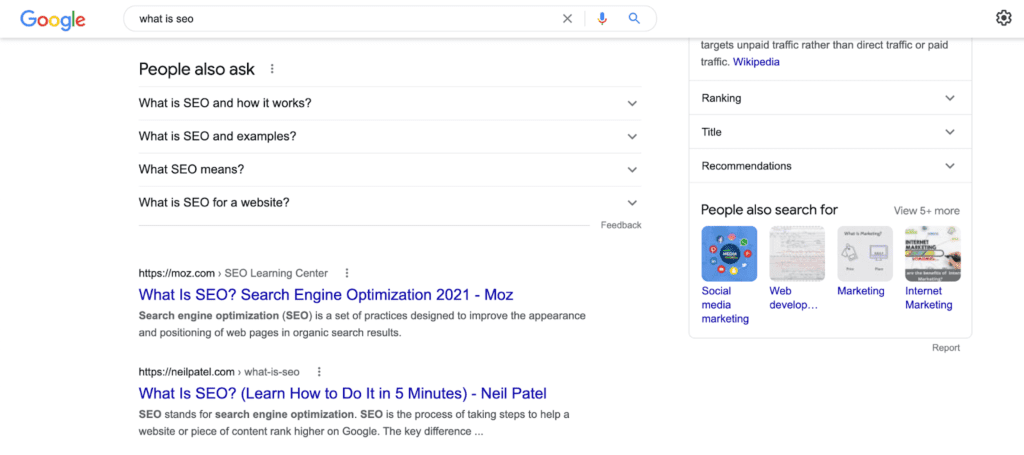
The ability to extract snippets from an article is becoming more important based on how Google delivers search results. As a content creator, you naturally want to create content that could appear in those results, too. We’ll touch on that later on in this article.
Where Is NLP Providing Opportunities for Marketers?
As you can see from the BERT and SMITH updates, NLP plays an increasingly important role in how the algorithm operates. Google is already using NLP across its products. It is used for voice search, translations, and text-based searches.
NLP & Voice Search
Voice search is an important development for content creators, and it’s something that you need to keep track of. In the main, the developments in voice search don’t fundamentally change anything for a site owner, though. A written or spoken command on Google provides the same set of results.
Equally, there aren’t many fundamental differences in how we do a voice search compared to a text search. If anything, voice searches tend to be more exact. You are more likely to use whole sentences rather than just words.
NLP & Content
The combination of an improved understanding of content and changes in how content is being delivered through search engines does provide opportunities for content marketers. It helps them make changes to their keyword strategy and content campaigns. One of the best examples of this is Google’s Instant Answers and the Featured Snippet.
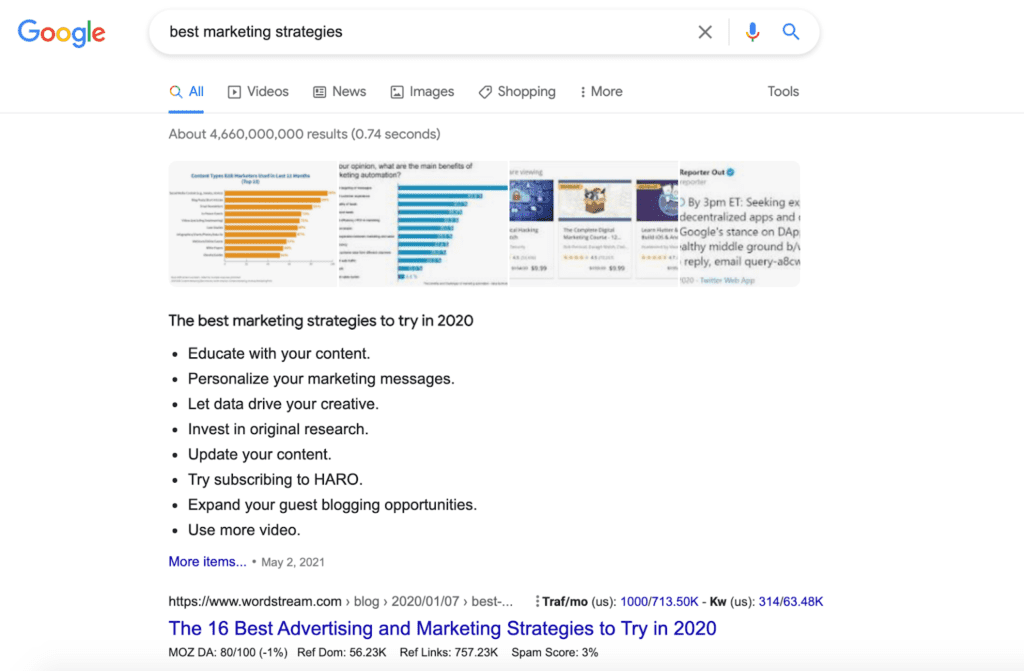
The way you can take advantage of Google’s Featured Snippets and Instant Answers to make your content rank. The most common way to target featured snippets or Instant Answers is to include an NLP-optimized paragraph immediately after a heading.
The example below provides a nice illustration of best practices. You can see the box has a simple one-sentence definition directly below a heading.
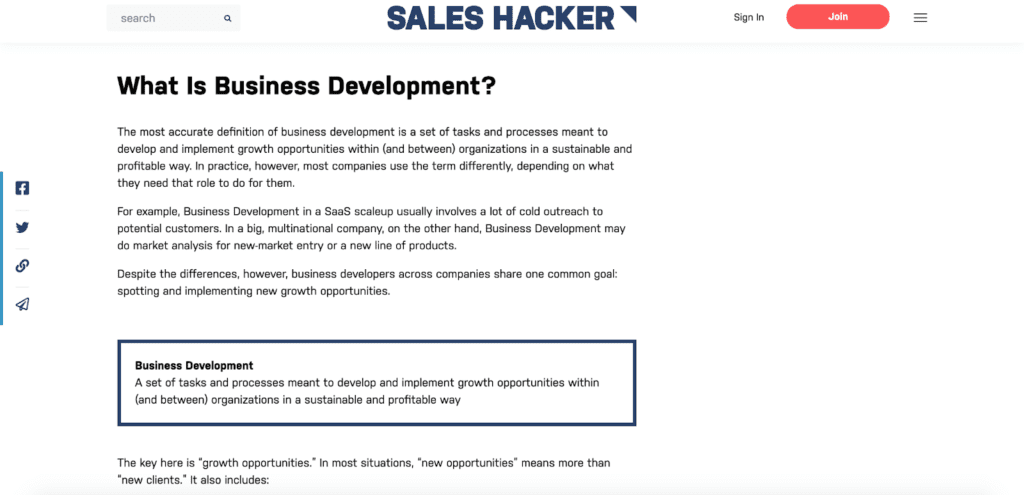
You’ll see this page structure used on many blog posts. For example, here is an article from AdamEnfroy where he’s added an FAQ section to the end of one of his blog posts.
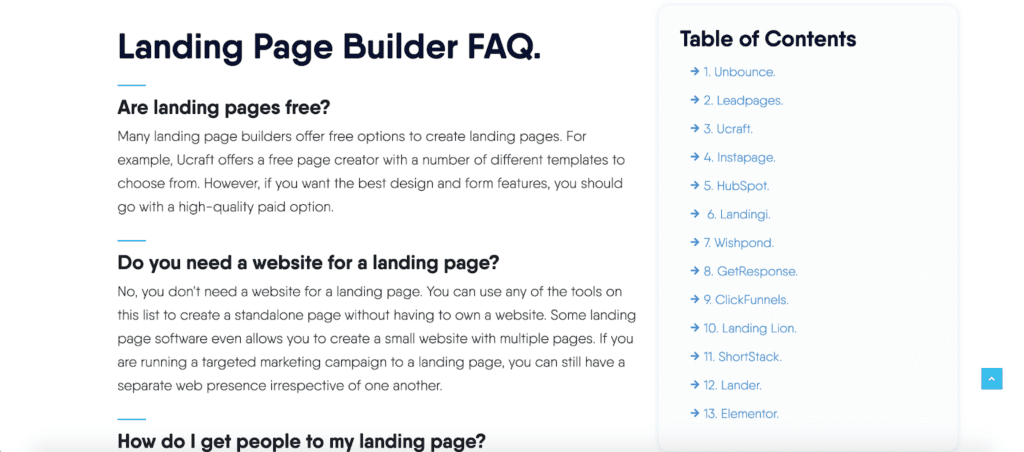
These questions are targeting Google Instant Answer positions.
You can use a similar approach on your other pages too as a sales prospecting technique.
Below is a nice example of an SEO-optimized sales page targeting the keyword Cloud Call Center from Nextiva. Immediately below the heading, they have a Youtube video. The video is targeting this exact phrase.
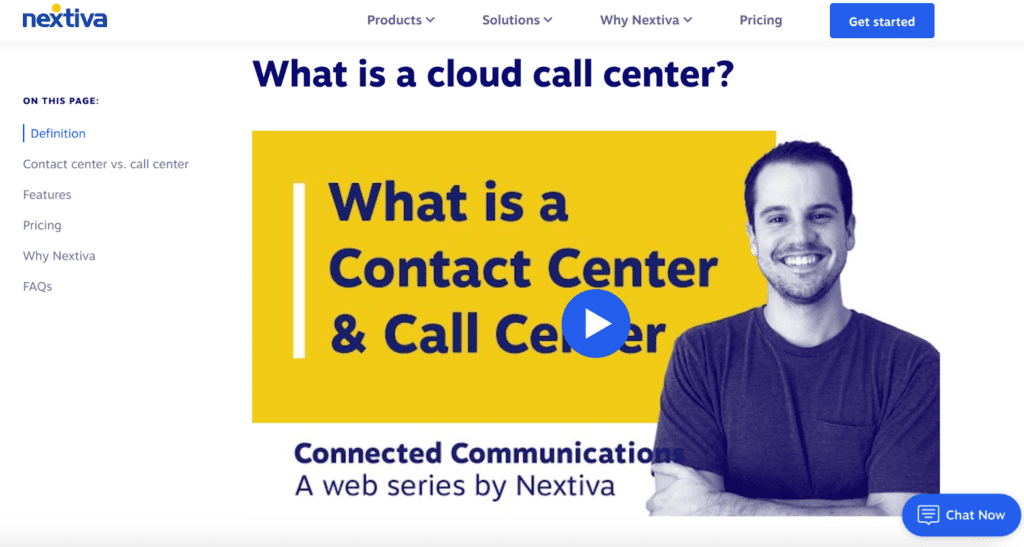
Below the video, they have a short piece of text that describes a cloud call center. You can visit their cloud call center sales page to see how they’ve structured the content.
NLP & Keyword Optimization
Various content optimization tools are also using NLP to help content creators understand what phrases and keywords to include within an article and what questions to answer. The two most well-known tools in this rapidly increasing space are probably Clearscope and Surfer SEO.
Most of these new tools work in much the same way. Here’s a quick summary:
- You enter a keyword or phrase you are targeting.
- The tool will do an API call to an AI platform like Google Natural Language Processing.
- The top 30 results for that keyword in the search results are analyzed. The AI determines what the most important terms to include in the article are.
- You include the relevant headings and keywords.
To help you get a sense of how these tools work, here’s a screenshot from Frase.
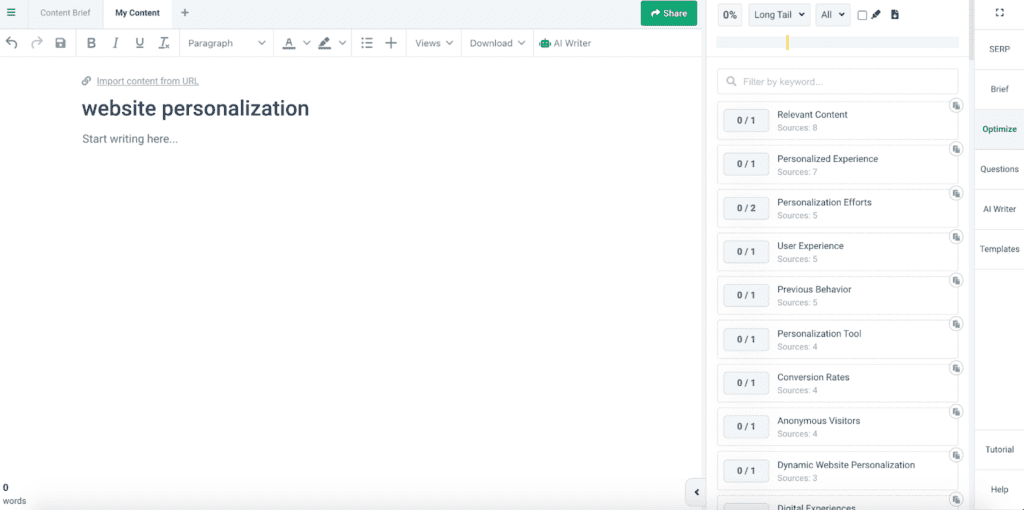
On the right-hand side of the screen, you can see a list of terms to include. Tools like Clearscope or Surfer SEO will also suggest headings to include. Obviously, just stuffing keywords into the content won’t make it rank.
A good piece of content with all of the keywords has a great chance of satisfying user intent, though. That can give it an edge in competitive search results.
GPT-3: AI Writers
Arguably, one of the biggest impacts of NLP on SEO is just starting to occur; GPT-3.
GPT-3 is an NLP model that uses machine learning to create content. That means the AI attempts to understand what topic you want to cover and then writes the content. Essentially, we’re talking here about AI content creation.
The most famous example in this space is probably Jarvis, named after Iron Man’s computer. Jarvis uses OpenAI, part-funded by Elon Musk and used by Tesla to process data for self-driving cars.
We’re still in the very early stages of AI content creation. Here’s an example of a bit of AI-written content.

The content is ok, not great. You can probably create 100-300 words of content at a go, which you need to review and edit.
Given that these tools use machine learning, the more people use the tools, the faster they will develop. When AI can create content as good as a human writer, it will have major impacts on SEO and content marketing. You can imagine the ramifications for SEO when anyone can create an SEO-optimized blog post at the click of a button.
Conclusion
As marketers trying to drive visitors to a website, we need to keep tabs on evolving digital marketing trends. Having a few insights that your competitors lack can give you that little edge that helps you dominate the SERPs.
This guide looked at how NLP is transforming SEO. We discussed some of the major Google updates and discussed four important developments. Those developments included the advances in GPT-3, and the launch of advanced keyword optimization tools. Hopefully, there are some tips and learnings from this post you can apply to your business.

